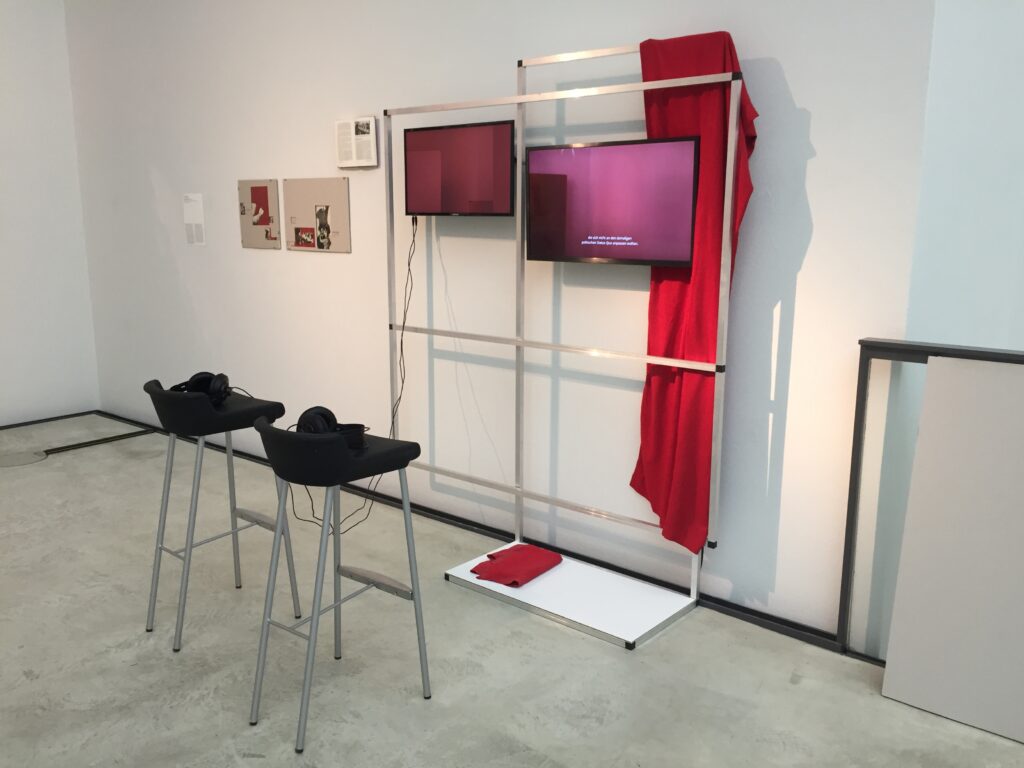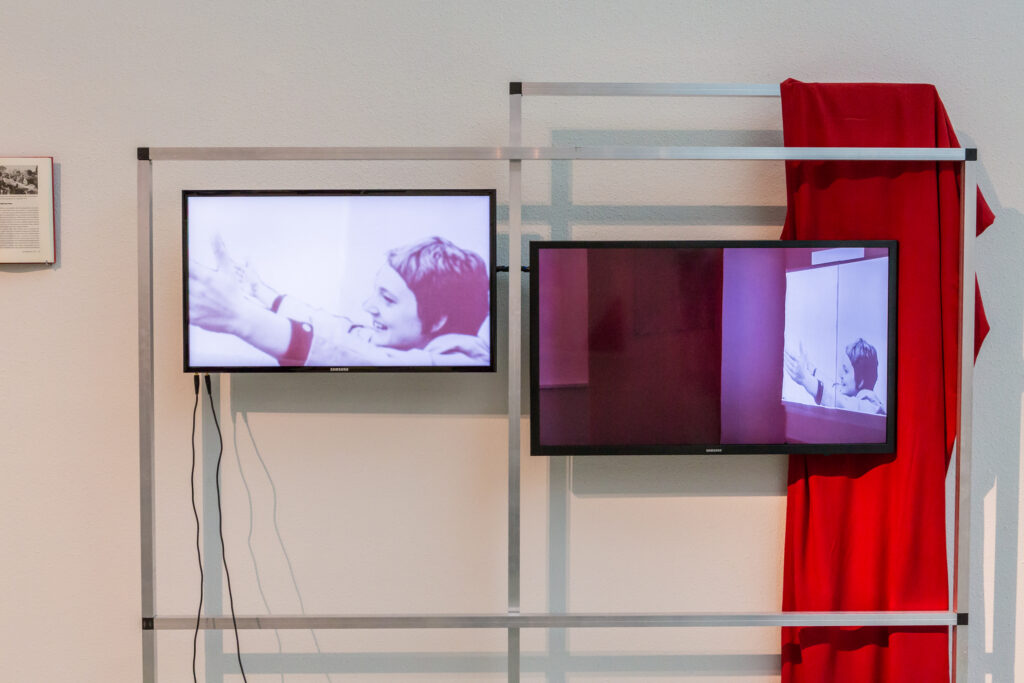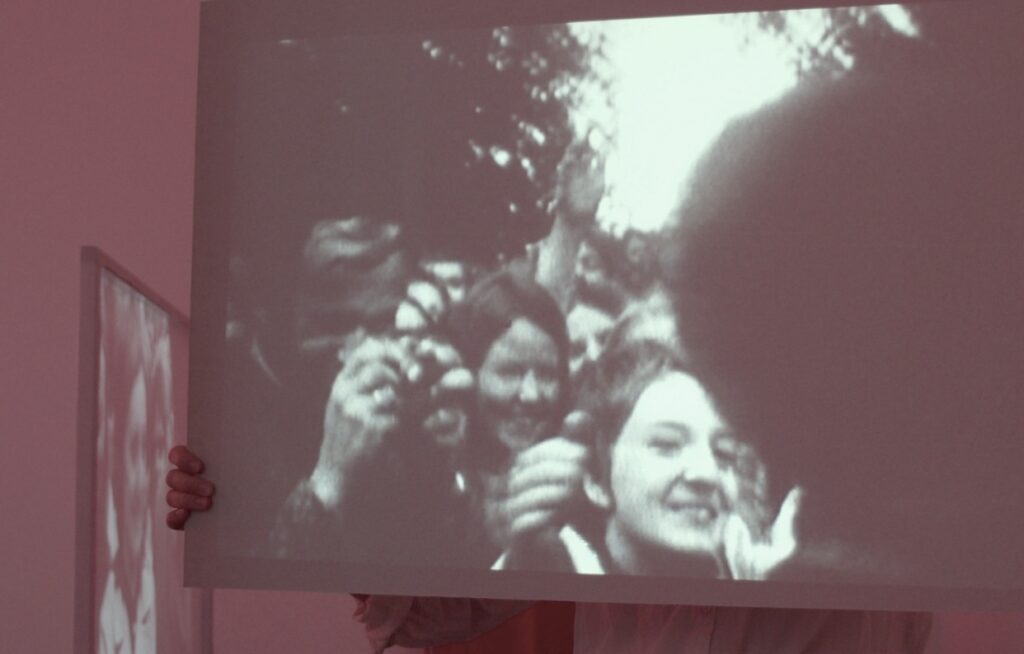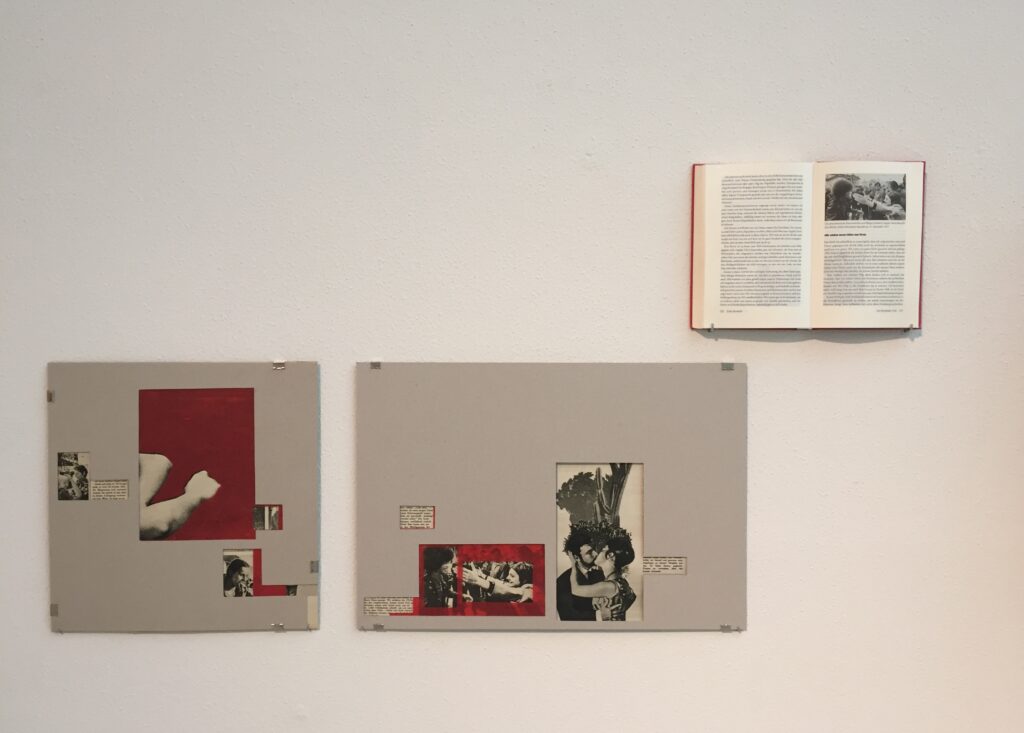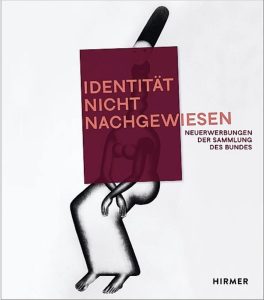The video installation Hugging Angela Davis centres around a spontaneous hug between Angela Davis and a young East German during Davis’ visit to East Berlin in 1972. Erika Berthold, the daughter of socialist functionaries, was active in opposition circles together with her husband Frank Havemann (the son of the well-known communist and dissident Robert Havemann) and had been briefly arrested after protesting against the suppression of the Prague Spring. The work probes into the potentiality opened by this encounter between the two figures and their different, but entangled political struggles. It weaves a narrative questioning of their encounter with a filmic and performative examination of the motif of the embrace as a somatic, affective, political gesture. What can be made of the two women’s mutual recognition, their shared departure from protocol? How does their momentary complicity cross or complicate cultural and political differences and ascriptions? What might a – dissident – politics of the hug look like?
Die Videoinstallation Hugging Angela Davis (2-Kanal-Videoinstallation, 15 min, 2020) ist eine filmisch-performative Befragung einer spontanen Umarmung zwischen Angela Davis und einer jungen Frau während Davis’ Besuch in Ost-Berlin 1972. Erika Berthold stammte aus kommunistischem Elternhaus und war zusammen mit ihrem Mann Frank Havemann (dem Sohn des bekannten Kommunisten und Dissidenten Robert Havemann) in oppositionellen Kreisen aktiv, u.a. gegen die Niederschlagung des Prager Frühlings. Die Arbeit widmet sich dem politische Möglichkeitsraum, der in der Berührung der Schwarzen amerikanischen Kommunistin und der DDR-Dissidentin aufscheint. Was erzählt die instinktive Verbundenheit der beiden Umarmenden, ihr gemeinsames Ausbrechen aus der Starre des Protokolls? Wie durchkreuzt und verkompliziert ihre spontanen Verschwesterung kulturelle und politische Zuschreibungen und Differenzen? Was wäre eine (dissidente) Politik der Umarmung?
Presentations
- Exhibition and Artist Talk
